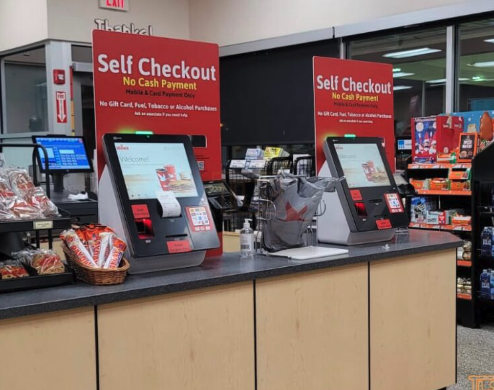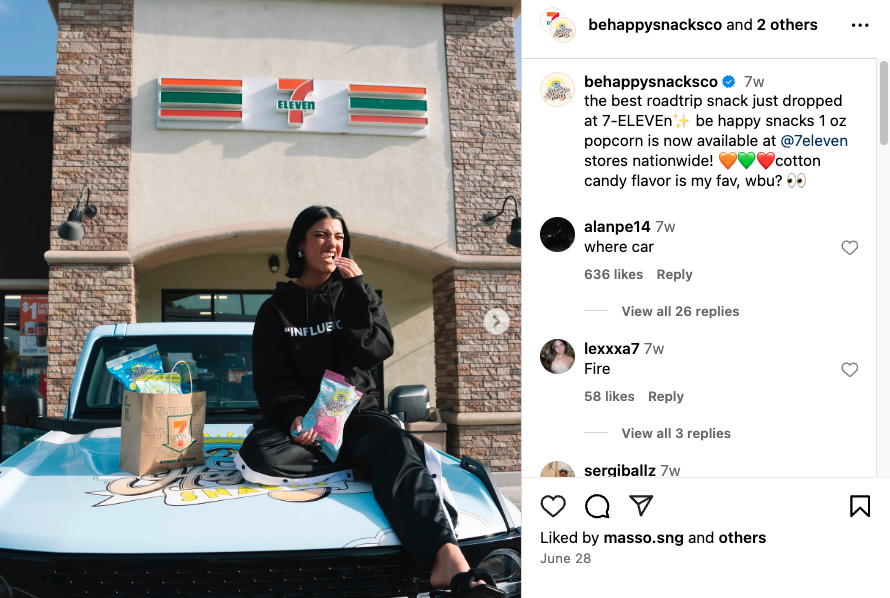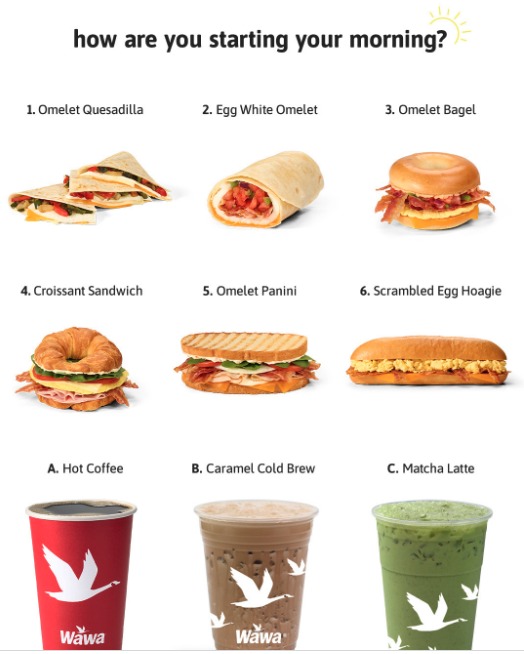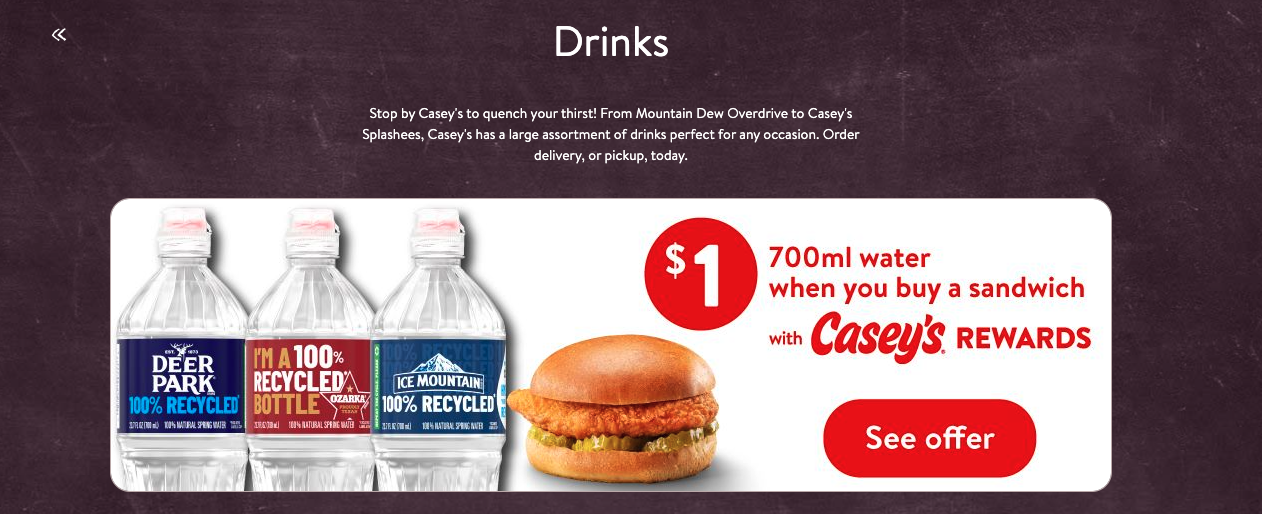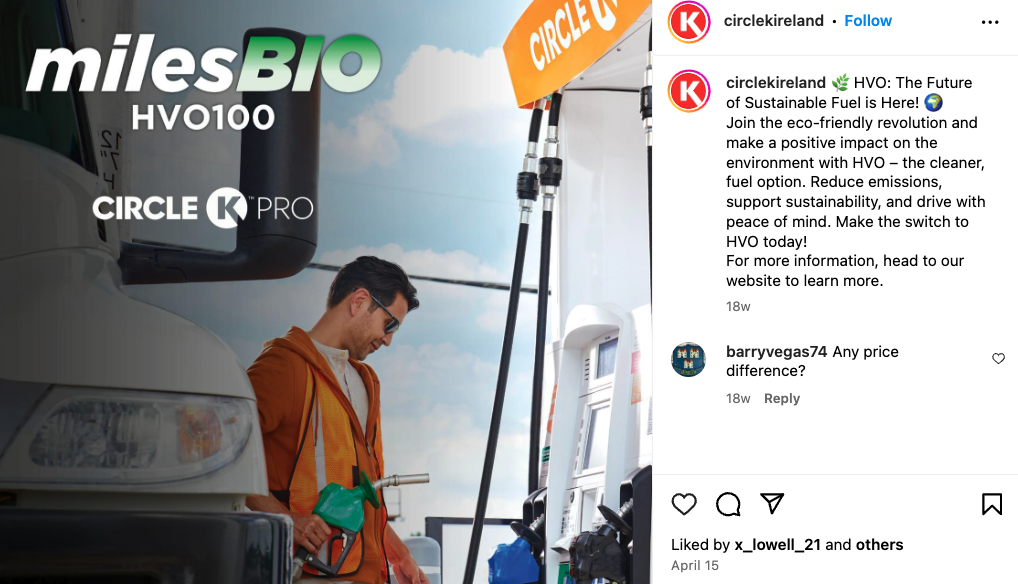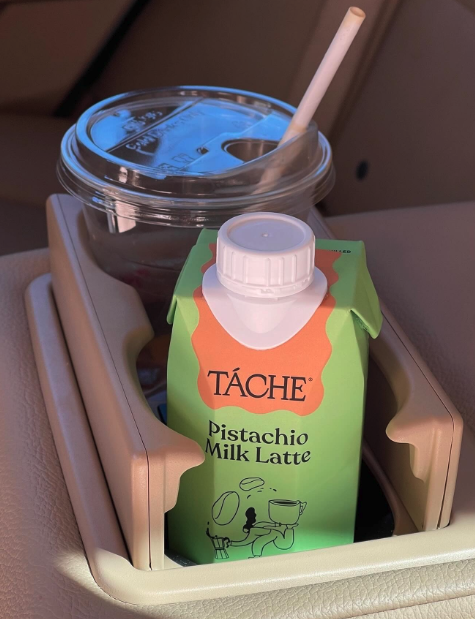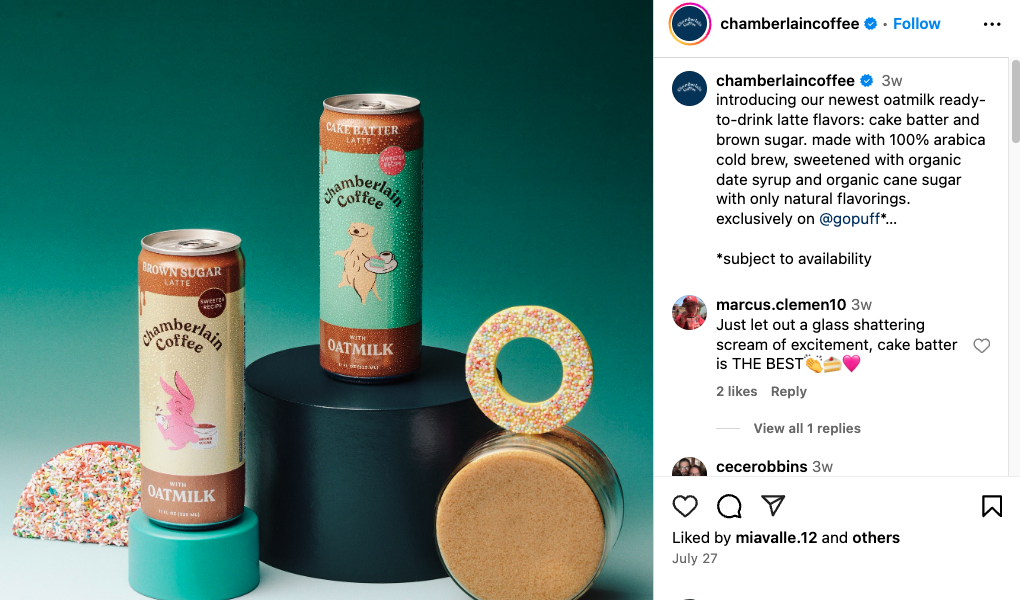
Convenience Store Trends: Stats and Trends Shaping 2024
This list includes all the c-store statistics and trends every business owner/operator should know.

Tessa ZuluagaAuthor
What's your go-to gas station order? While grabbing a bag of Hot Cheetos and a Diet Coke might be a familiar ritual, convenience stores are rapidly transforming into much more than just pit stops for fuel and quick bites.
Convenience stores have always provided consumers with daily necessities. However, the industry is now responding to the shift in consumer demands, technological innovations, and wider economic forces. These stores are reinventing themselves as destinations for fresh, quality food and an expanding array of products and services.
In this article, we'll dive into the top 10 convenience store trends shaping the industry in 2024. From high-tech innovations to healthier options, these trends are redefining what it means to be "convenient."
Ready to explore the future of your local corner store? Let's jump in!
Convenience store industry trends and statistics
1. Loyalty programs
First up we have loyalty programs in convenience retail. According to Antavo’s Global Customer Loyalty Report, 90% of loyalty program owners reported positive ROI, with the average ROI being 4.8x. As competition intensifies, convenience stores are leveraging loyalty programs to retain customers and enhance their overall shopping experience.
To capitalize on this trend, convenience stores can leverage data analytics to create customized offers based on purchasing behaviors which can enhance customer engagement. According to The Loyalty Report, 85% say loyalty programs make them more likely to continue to shop with brands. By adopting mobile apps that allow easy point accumulation and reward redemption, stores can attract tech-savvy shoppers.
For example, Cumberland Farms’ SmartPay Rewards app is a convenient way to save 10¢ per gallon on gas every day or pay for in-store purchases.
By prioritizing personalized and interactive loyalty programs, convenience stores can strengthen customer relationships and drive sales in an increasingly competitive market.
2. Self-checkout
Self-checkout technology allows customers to scan, bag, and pay for their items without the need for a cashier. According to Wifi Talents, self-checkout stations can reduce customer wait times by up to 30%, and 65% of consumers believe that self-checkout lanes are faster than traditional lanes.
This system typically consists of a touchscreen interface, barcode scanner, payment terminal, and bagging area. Some advanced systems may also incorporate artificial intelligence and computer vision to improve accuracy and prevent theft.
Some Wawa locations have already adopted self-checkout:
Implementing self-checkout in convenience stores can provide several advantages:
Reduced labor costs: By automating the checkout process, stores can reallocate staff to other areas, such as restocking or customer service.
Improved customer experience: Shorter wait times and the option for a contactless transaction can enhance customer satisfaction.
Efficiency: Self-checkout kiosks often have a smaller footprint than traditional checkout counters, freeing up valuable floor space.
24/7 operation: Self-checkout systems can enable stores to operate with minimal staff during off-peak hours.
Who knew a little DIY scanning could be so revolutionary?
3. Electric car charging stations
As electric vehicle (EV) adoption continues to accelerate, convenience stores are plugging into a new opportunity.
According to Pew Research Center, over 95% of the American public now live in a county that has at least one public EV charging station. This is for good reason; as of 2024, there are about 2,442,270 electric vehicles registered in the United States.
EV charging stations at c-stores offer several benefits:
New revenue stream: Charging fees can provide additional income, especially as charging times typically range from 15-45 minutes.
Increased foot traffic: EV owners become captive customers while their vehicles charge, driving them to make in-store purchases.
Enhanced brand image: Offering charging stations positions c-stores as environmentally conscious and forward-thinking.
Competitive advantage: Early adopters can capture market share in the growing EV segment.
Government incentives: Many regions offer tax breaks or grants for businesses installing charging infrastructure.
By embracing this trend, convenience stores can juice up their business model, attract a growing customer base, and position themselves ahead of the competition.
4. Healthier offerings
C-stores are in their wellness era.
In 2024, convenience retailers are increasingly stocking their shelves with healthier, fresher, and protein-packed alternatives to meet evolving consumer demands. The global protein snacks market reached a total revenue of $4.1 billion in 2022, and is expected to hit $10 billion by 2032, according to research firm Future Market Insights.
Convenience stores’ food service should consider including fresh foods, made-to-order options, and organic offerings. New products launched in 2023 focused more on clean ingredients and short ingredient lists, a trend that has been prevalent for the past few years.
7-eleven collaborated with Charli D'Amelio and Happy Snacks to offer lower calorie options in-store:
Wawa is known for its hoagies which are a high-protein option.
This retail trend represents a significant shift in the c-store industry's approach to meeting consumer needs. It's not just about offering a token healthy option anymore, but about reimagining the entire product mix to cater to a more health-aware customer base.
5. More beverages
Sit down. Drank. Stand up. Drank. Get gas. Drank.
In 2024, convenience stores are tapping into new beverage options that are transforming their coolers. This is not a new concept for the retail industry. According to Statista, packaged beverages had the second-highest merchandise sales for convenience stores in 2021.
However, in 2024, hydration has skyrocketed as a wellness trend. According to The Vitamin Shoppe's Health & Wellness Trend Report, the hydration category has seen an over 200% surge in website searches over the past year. Consumers are seeking branded, flavor-infused hydration products with added electrolytes.
Casey’s General Stores offer a free 700mL water bottle with the purchase of a sandwich as part of their rewards program. This is a great way to encourage guests to both join your loyalty program and make their way over to your drink refrigerators.
Another popular trend right now is probiotic sodas, like OLIPOP. Sales in the United States of soft drinks containing prebiotics and probiotics increased 210% from April 2022 to April 2023, according to the market researcher SPINS. This global surge in demand is likely due to the increasing awareness about gut health and the benefits of probiotics. Pro tip: the OLIPOP Cream Soda flavor is delicious! According to the healthy soda brand themselves, Classic Root Beer, Cream Soda, and Classic Grape are their top selling flavors.
As consumer demand for convenient, healthier beverage options continues to rise, convenience stores should be responding with expanded drink offerings and creative promotions to drive traffic and engage customers.
6. Customer experience
Customer experience has become a significant trend in convenience stores as they compete for daily customer visits. 93% of customers are likely to make repeat purchases with companies that offer excellent customer service. (HubSpot Research).
C-stores that enhance the customer experience can differentiate themselves and build loyalty. This includes:
Personalization: Using data to offer targeted promotions and customize product offerings.
Staff training: Improving customer service skills to create a more welcoming atmosphere.
Additional services: Adding features like seating areas, Wi-Fi, or competitions/giveaways.
By prioritizing customer experience, c-stores aim to become destinations rather than just pit stops, encouraging repeat visits and building brand loyalty in a competitive market.
7. Artificial intelligence
Artificial intelligence (AI) has become undeniable in many industries, retail just being one of them. AI offers numerous opportunities for enhancing operations and customer experience.
Inventory management: AI systems can help predict demand, optimize stock levels, and automate reordering processes.
Personalized marketing: AI can analyze customer data to deliver targeted promotions and recommendations.
Dynamic pricing: Predictive and dynamic pricing is one area where c-stores could make good use of AI, according to the Convenience Leaders Vision Group report. AI algorithms can adjust prices in real-time based on demand and competition.
Security: AI-enhanced surveillance systems can improve loss prevention and store safety.
Customer service chatbots: AI-powered virtual assistants can provide 24/7 customer support. In 2022, 88% of users engaged in at least one conversation with a chatbot and only 9% of consumers oppose companies using bots.
These AI applications are helping c-stores improve efficiency, reduce costs, and provide more personalized and seamless experiences for customers. As AI technology continues to advance, we can likely expect to see even more innovative applications in the convenience store sector.
8. Sustainability
Sustainability has become a significant trend in the convenience store industry, driven by growing consumer awareness and environmental concerns.
Sustainability in c-stores focuses on reducing environmental impact while meeting customer needs. This includes minimizing waste, reducing energy consumption, offering eco-friendly products, and supporting local communities.
Implementation strategies for 2024 can include:
1. Eco-friendly packaging
Implement biodegradable or recyclable packaging for prepared foods and beverages
Offer reusable container programs with incentives — for example, Starbucks allows customers to bring in their own clean cups to help reduce waste.
A great example is 7-Eleven’s "bring your own cup day."
2. Energy efficiency
Install LED lighting and energy-efficient refrigeration systems
Implement smart energy management systems to optimize power usage
3. Sustainable product offerings
Expand organic, locally sourced, and plant-based food options
Stock environmentally-friendly household products and personal care items
4. Waste reduction
Implement comprehensive recycling programs
Partner with food banks to donate unsold, still-good food items
5. Sustainable transportation
Add electric vehicle charging stations
Offer bike racks to encourage eco-friendly commuting
6. Local sourcing
Partner with local farmers and producers to reduce transportation emissions and support the local economy
By implementing these strategies, c-stores can position themselves as responsible businesses, appeal to eco-conscious consumers, and potentially reduce operational costs.
9. Canned coffee
(Yes, another beverage trend.)
Offering different coffee and caffeine-infused beverages is not a new trend for convenience stores. However, the rate at which people are consuming coffee and what form they’re buying their coffee in is new.
The global coffee market is estimated to be worth $132.1 billion USD in 2024 and is expected to reach$166.4 billion USD by 2029, growing at a compounded annual growth rate (CAGR) of 4.72%. In Q1 2024, guests across the U.S. paid an average of $3.08 for a cup of regular coffee, $5.14 for cold brew, $5.46 for lattes, and $3.74 for tea. Essentially, guests are willing to pay more for a latte. Most recently, canned coffee and lattes have grown in popularity.
In America, a new trend of canned coffee has emerged. Canned coffee is favored predominantly by young people, especially young women. They’re looking for large, cold, café-quality beverages in a resealable bottle. Starbucks accounts for 65% of canned coffee sales by volume. Another brand that has skyrocketed in popularity is La Colombe, their Draft Latte ready-to-drink (RTD) product helped the company become the fastest-growing RTD company in the United States in the second half of the 2010s.
Some other popular options are Táche and Chamberlain Coffee.
These are two stellar examples because they’re convenient, aesthetically pleasing, filled with caffeine, and plant-based. Is this trend-ception?
10. Technology
Useful technology that improves your daily operations will always be trending.
Technology, especially Point of Sale (POS) systems like Toast, is vital for modern convenience stores. These systems streamline transactions, manage inventory, and provide valuable sales analytics. They can also assist with employee management, integrate with other business tools, and enhance customer relationship management.
Toast POS offers mobile functionality, versatile payment options, and easy menu management for stores selling prepared foods. Additionally, these systems help ensure regulatory compliance and data security. By leveraging such technology, convenience stores can operate more efficiently, make informed business decisions, and, ultimately, provide better service to their customers.
For more information check out this article on the Best Convenience Store POS Systems.
Set your convenience store up for success
If your business is looking to increase profitability this year, consider implementing some of these trendy tactics to attract consumers and build loyalty. The convenience store industry is evolving, and staying ahead of the curve is crucial.
By embracing technology like advanced POS systems, offering healthier food options, and focusing on exceptional customer service, you can differentiate your store from your competitors.
The key is to balance convenience with innovation, meeting the changing needs of today's consumers. With the right strategies in place, your convenience store can thrive and foster long-term customer relationships.
Related convenience store resources:
Is this article helpful?
DISCLAIMER: This information is provided for general informational purposes only, and publication does not constitute an endorsement. Toast does not warrant the accuracy or completeness of any information, text, graphics, links, or other items contained within this content. Toast does not guarantee you will achieve any specific results if you follow any advice herein. It may be advisable for you to consult with a professional such as a lawyer, accountant, or business advisor for advice specific to your situation.
Subscribe to On the Line
Sign up to get industry intel, advice, tools, and honest takes from real people tackling their restaurants’ greatest challenges.

